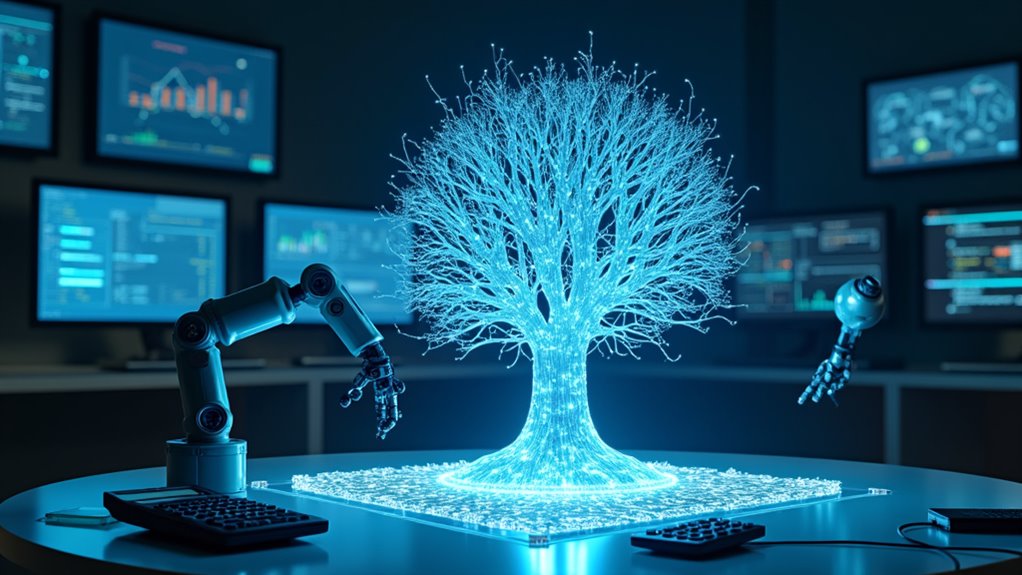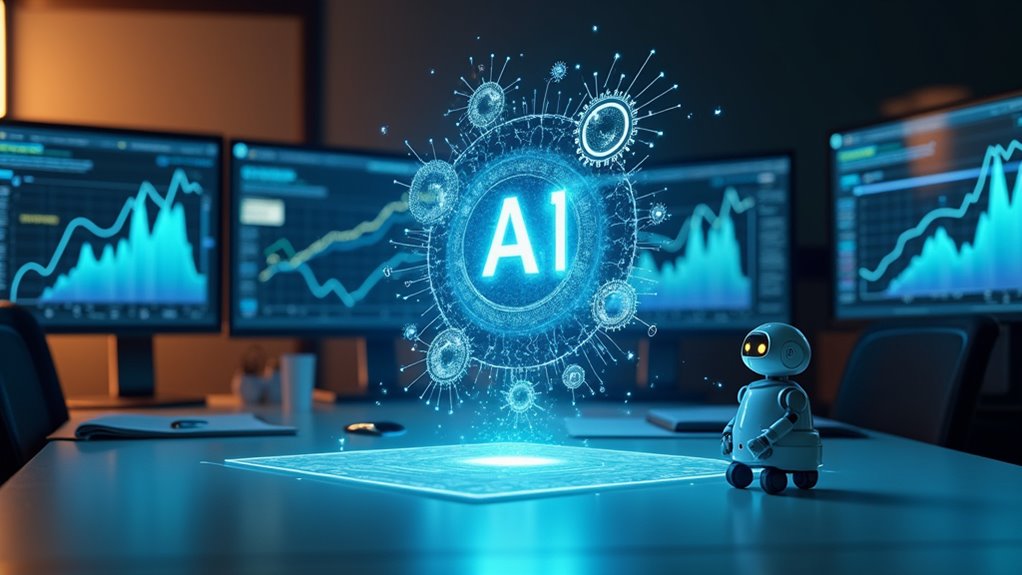Real artificial intelligence goes beyond simple if-then programming to mimic human cognitive abilities. Unlike your “smart” toaster (which isn’t smart at all), genuine AI learns, adapts, and applies knowledge across different situations. It evolves through experience rather than following fixed rules. Most products claiming to be “AI” are just clever marketing—they lack true intelligence. True AI demonstrates autonomous decision-making and broad problem-solving capabilities, not just pattern recognition. The deeper implications of actual AI might surprise you.

Confusion clouds the AI landscape as tech companies splash “artificial intelligence” on everything from chatbots to thermostats. But what actually constitutes real AI? Not your smart coffee maker, that’s for sure. Real artificial intelligence refers to systems that genuinely mimic human cognitive capabilities—learning, adapting, and applying knowledge across diverse intellectual tasks without explicit programming.
When everyone’s “AI” is special, none of it is. Real AI thinks, learns, and evolves—not just follows simple rules.
Unlike rule-based systems that merely follow predefined instructions (your thermostat isn’t “thinking,” folks), real AI demonstrates versatility and continuous learning. It evolves through experience rather than staying fixed in its capabilities. Those rule-based systems? They’re just fancy calculators with good PR.
The ethical implications of developing true AI extend far beyond the mundane questions of data privacy we currently debate. We’re talking about potential machine consciousness, autonomy, and the fundamental reshaping of society’s relationship with technology. The development of real AI raises profound ethical considerations regarding control, alignment with human values, and potential existential risks.
Real AI stands in stark contrast to generative AI, which primarily creates content based on patterns it’s observed. While your favorite text generator can write a sonnet about cats wearing hats, it lacks the broad problem-solving abilities that define authentic artificial intelligence. True AI aims to achieve Artificial General Intelligence, with capabilities that span across various domains and tasks. Genuine AI makes autonomous decisions, adapts to unforeseen situations, and reasons across domains—not just within a single creative task. Unlike traditional deterministic systems, real AI requires systematic evaluation approaches to ensure it operates within intended boundaries and meets desired standards.
Explainability remains essential to real AI development. If a system can’t justify its actions or make its decision-making process transparent, how can we trust it? This accountability becomes especially significant as AI systems take on increasingly consequential roles in healthcare, transportation, and government.
The path to developing real artificial intelligence remains largely theoretical. We’re witnessing impressive advancements in specialized systems, but the holistic cognitive capabilities that define true AI still elude us.
Next time someone tries to sell you on their “AI-powered” umbrella, remember: if it can’t learn, reason, and adapt beyond its programming, it’s not real AI. It’s just marketing.
Frequently Asked Questions
How Does AI Consciousness Differ From Human Consciousness?
Human consciousness involves subjective experiences and self-awareness, while AI lacks true machine awareness.
The cognitive comparison reveals fundamental differences—humans feel emotions and possess intuitive understanding, whereas AI simulates consciousness through programmed responses without actually experiencing anything.
Current AI systems process information without sentience, functioning more like sophisticated calculators than conscious beings.
Though AI can mimic certain cognitive functions impressively, it can’t replicate the qualia or “what-it-is-like-ness” that defines human consciousness.
Can AI Develop Emotional Intelligence Without Explicit Programming?
AI can develop emotional intelligence through unsupervised learning, though not truly “feeling” emotions.
Systems can identify patterns in human expressions and reactions without explicit programming, developing emotional recognition capabilities organically through exposure to human interactions.
They fundamentally learn to simulate empathy by recognizing contextual emotional cues.
This mimicry becomes increasingly sophisticated as AI processes more diverse emotional data, creating the appearance of emotional intelligence without the underlying human experience.
What Ethical Frameworks Govern Truly Intelligent AI Systems?
Truly intelligent AI systems demand robust ethical frameworks that go beyond technical specs. Leading approaches include the IEEE Global Initiative, EU’s Ethics Guidelines, and the Asilomar AI Principles – each addressing ethical considerations from algorithmic fairness to human dignity.
The moral implications are massive, folks! These frameworks aren’t just nice-to-haves; they’re essential guardrails preventing AI from reinforcing biases or making life-altering decisions without accountability.
Remember: powerful technology requires equally powerful ethical oversight.
How Do We Measure AI Creativity Versus Rule-Following?
Measuring AI creativity versus rule-following requires examining both creative generation capabilities and rule adherence patterns.
Researchers typically use frameworks like the Consensual Assessment Technique to evaluate novelty and value, while automated metrics quantify originality.
True AI creativity emerges when systems generate unexpected solutions that transcend their programming.
Want the real test? Look for outputs that surprise even their creators!
The balance between innovation and algorithmic constraints remains the central challenge in distinguishing genuine creativity from sophisticated rule-following.
What Neurological Principles Inspire Non-Rule-Based AI Architectures?
Non-rule-based AI architectures draw inspiration from several neurological principles. Neural networks mimic how brain cells connect and learn through experience rather than fixed instructions.
These systems strengthen connections based on successful outcomes—just like your brain does when learning to ride a bike. Cognitive architectures further borrow concepts of attention, memory formation, and hierarchical organization from human cognition.
Unlike your rigid smartphone calculator, these AI systems adapt, recognize patterns, and make decisions based on context rather than pre-programmed rules.









